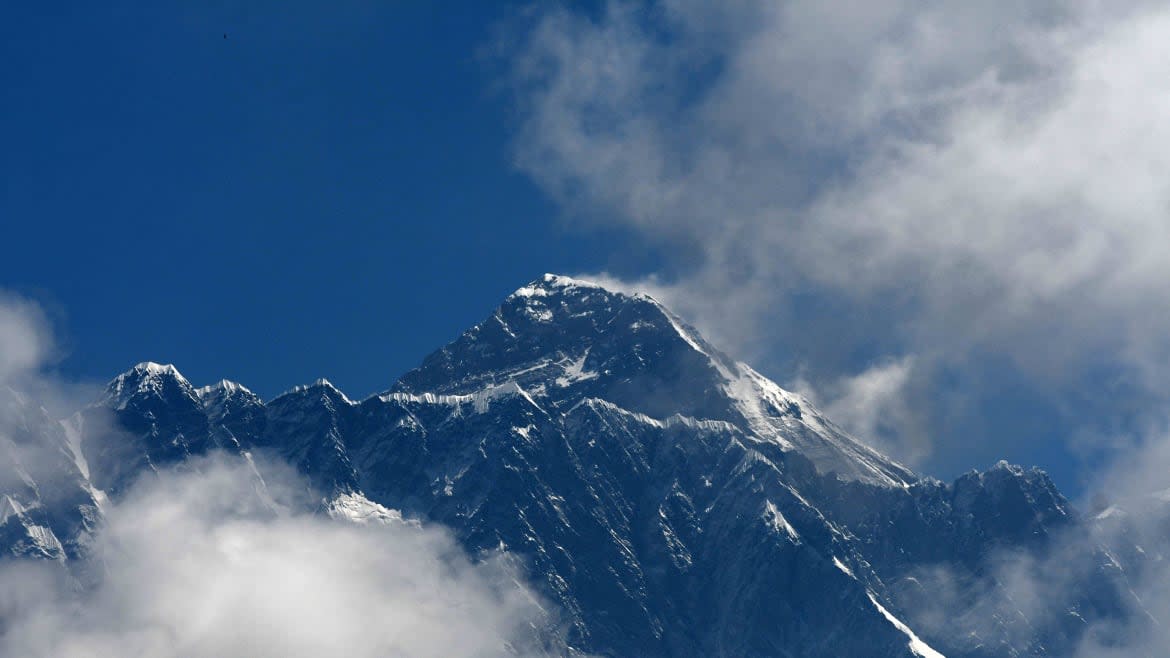Why Are So Many People Dying on Mount Everest?

It’s been a particularly deadly year on Mount Everest, with 11 people dying while attempting the climb since the start of the climbing season.
Climbing Mt. Everest, which stretches to over 29,000 feet, is dangerous under the best of conditions and preparation. But overcrowding at the top of the mountain and more inexperienced climbers made things particularly dangerous this year—and exacerbated the factors that can lead to fatalities.
Most of the deaths are likely from severe altitude sickness, Jeffrey Gertsch, an associate clinical professor of neuroscience at the University of California San Diego who’s studied extreme altitude, told The Daily Beast. “If not directly, then indirectly,” he said.
The mildest form of altitude sickness, called acute mountain sickness, can set in far below the peak of Mount Everest, causing symptoms like dizziness, nausea and fatigue in up to three-quarters of people, depending on how high and how quickly they climb. It typically passes if climbers pause and let themselves adjust to the low oxygen and low pressure conditions.
As people climb higher, and the air thins further, more severe illnesses set in. High altitudes and low oxygen make the membranes around the brain and around the lungs leaky, allowing fluids to get into where they’re not supposed to go, Gertsch said. “All these places in your body are made up of compartments. They’re not supposed to leak,” he said. Fluid entering the lungs is called a high-altitude pulmonary edema (HAPE), and makes it harder to get oxygen in an already oxygen-low environment. “It makes everything worse,” he said.
Fluid leaking into the brain—called a high-altitude cerebral edema (HACE)—is even more dangerous, Gertsch said. People with HACE usually start to become confused, and have poor balance and coordination. “Most people can’t even walk in a straight line,” he said. “While pulmonary edemas have a wider window and you usually don’t die, the cerebral edema death rate is high. When you’re up in a place like that, you can’t really get help.”
The effort it takes to get up to the top of Mount Everest, where the environmental conditions can cause HACE and HAPE, also puts people more at risk for the conditions, Gertsch said. “The thing about these forms of altitude illnesses are that they’re opportunistic,” he said. “They start to gain steam when there’s any other weakness. If you have a cold, if you are fatigued, if you are dehydrated—it’s going to come on even faster and hit harder.”
Some people—particularly less experienced climbers, who may not recognize the signs of a potentially deadly illness—will push through anything to get to the top of the mountain, Gertsch said. “They’ll do anything, even when it starts to defy logic, to tag the summit. Then they realize, wow, I don’t have what it takes to get back down. Lots of people who look to be clearly in need of help, a lot of people won’t help—because they’re too focused on the summit, or don’t have enough energy left, because they didn’t belong there anyway.”
At 29,000 feet, every climber will have some disruption in their membranes and some fluid leakage, Gertsch said. That’s why it’s so important to move quickly. “You get up, tag the summit, and get down. You’re just surviving, while you’re up there.” The long lines to reach the summit and crowding at the top then, force climbers to spend more time in the environment that can cause these potentially deadly conditions. “As a climber, I’m offended, and as a physician, I’m horrified,” Gertsch said. “It’s just a cattle call in a really dangerous place.”
Got a tip? Send it to The Daily Beast here
Get our top stories in your inbox every day. Sign up now!
Daily Beast Membership: Beast Inside goes deeper on the stories that matter to you. Learn more.

